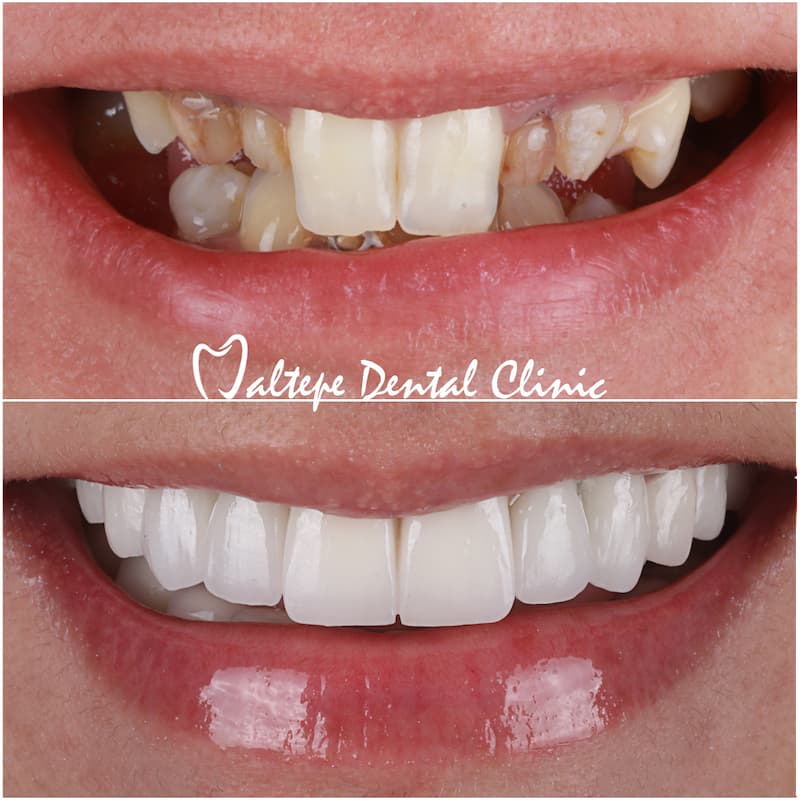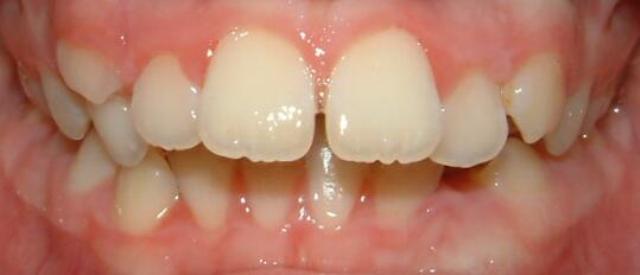Do you find yourself self-conscious when you smile due to the appearance of your front teeth flaring outwards? If so, you are not alone. This condition, known as buck teeth, is a common dental concern affecting many individuals. Buck teeth, also referred to as an overbite or protrusion, can occur for various reasons, including genetics, thumb sucking as a child, or extended use of a pacifier. Fortunately, there are effective solutions available to correct buck teeth and improve the aesthetics of your smile. In this comprehensive guide, we will delve into the causes and symptoms of buck teeth and explore different treatment options to help you achieve a beautiful and confident smile.

Image: www.maltepedentalclinic.com
Understanding Buck Teeth: Causes and Symptoms
Buck teeth, characterized by the protrusion of the upper front teeth beyond the lower teeth, can develop due to several factors. Genetics plays a significant role, as the shape and position of our teeth are often inherited from our parents. Other contributing factors include prolonged thumb sucking or pacifier use, which can apply constant pressure on the developing teeth and jaw, leading to their misalignment. Additionally, certain medical conditions, such as an overgrowth of the jawbone or a weak jaw muscle, can also contribute to the development of buck teeth.
The primary symptom of buck teeth is the outward flaring of the upper front teeth, giving the appearance of a gap between the upper and lower teeth. Individuals with buck teeth may also experience difficulty biting or chewing, speech impairments, and an increased risk of gum disease and tooth decay due to the misalignment of the teeth.
Treatment Options for Buck Teeth
Correcting buck teeth requires a tailored approach that considers your specific dental needs and preferences. There are various treatment options available, ranging from non-invasive orthodontic treatments to surgical interventions.
1. Orthodontic Treatment
Orthodontic treatment is a common method for correcting buck teeth and involves using braces or clear aligners to gradually shift the teeth into their proper position. Braces consist of metal or ceramic brackets attached to the teeth, connected by wires that gently apply pressure to move the teeth. Clear aligners, on the other hand, are removable trays custom-made to fit your teeth, which gradually adjust their position over time. Orthodontic treatment typically takes several months to years, depending on the severity of the buck teeth.

Image: walkerbraces.com
2. Surgery
In some cases, surgical intervention may be necessary to correct severe buck teeth. Surgical options include jaw surgery to reposition the jawbone or orthognathic surgery to adjust the alignment of the teeth and jaws. Surgery is typically recommended when orthodontic treatment alone is not sufficient to achieve the desired results.
Benefits of Fixing Buck Teeth
Correcting buck teeth offers a range of benefits beyond improving the aesthetics of your smile. It can also enhance your overall oral health, as properly aligned teeth are easier to clean and maintain, reducing the risk of cavities and gum disease. Additionally, fixing buck teeth can improve your bite function, making it easier to chew and speak clearly. Moreover, it can boost your self-confidence and allow you to smile more confidently.
Expert Insights and Actionable Tips
Dr. Sarah Thompson, a renowned orthodontist, emphasizes the importance of early intervention in correcting buck teeth. “Early orthodontic treatment can help guide the growth of the jaw and teeth, making it more effective and less invasive,” she says. Dr. Thompson recommends regular dental check-ups to monitor the development of buck teeth and determine the appropriate treatment options.
If you are considering correcting buck teeth, there are several things you can do to prepare for the process. Firstly, schedule a consultation with an orthodontist or dentist to discuss your concerns and explore the available treatment options. Secondly, maintain good oral hygiene practices, including regular brushing and flossing, to keep your teeth and gums healthy throughout the treatment process.
How To Fix Buck Teeth
Conclusion
Correcting buck teeth is a transformative process that can significantly improve your smile, oral health, and overall confidence. Whether you opt for orthodontic treatment or surgical intervention, there is a solution tailored to your unique needs. By addressing buck teeth promptly, you can unlock the benefits of a beautiful and functional smile that will enhance your life for years to come. Embrace the opportunity to transform your smile and experience the joy of a confident, radiant smile.